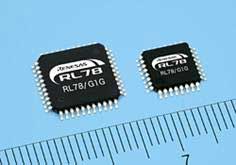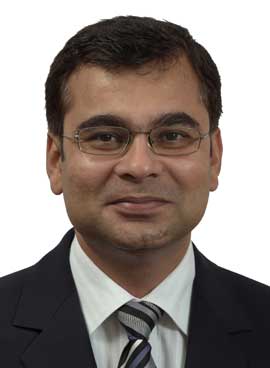Power savings is an inevitable global trend that has expanded its influence into the household appliances and consumer products that will further drive global power management solution demand.
 Ongoing technology trends, including decreased sensor, computation, and display costs, more pervasive integration of device‐level information processing capability and networking/communications, an increased interest in electric demand response, and the roll‐out of smart utility meters have greatly increased the opportunities for home energy management and enhanced their potential viability. To exploit those opportunities, a growing number of new Home Energy Management (HEM) products and companies have come emerged over the past decade, ranging from basic energy displays to whole home control systems and smart phone apps.
Ongoing technology trends, including decreased sensor, computation, and display costs, more pervasive integration of device‐level information processing capability and networking/communications, an increased interest in electric demand response, and the roll‐out of smart utility meters have greatly increased the opportunities for home energy management and enhanced their potential viability. To exploit those opportunities, a growing number of new Home Energy Management (HEM) products and companies have come emerged over the past decade, ranging from basic energy displays to whole home control systems and smart phone apps.
The efficient use of energy is now a global trend as well as a motivation to minimize the negative impact on the environment and to offset climate change. Additionally, ever-climbing energy prices and widespread random power outages due to overload conditions in power plants have heightened the need to re-evaluate our daily energy consumption. At the consumer level, most average homeowners do not have a clear understanding of how they have used their electrical energy, nor have any ideas about how and what to save in terms of daily energy usage and consumption.
The rapid growth of high-speed broadband Internet services, combined with growing consumer interest in saving energy, opens up opportunities outside traditional utility industries for technology companies and service providers to offer residential energy management systems and services with appliance control, energy consumption monitoring, and self-monitoring functions. It is this combination of services and systems that are generally classified as Home Energy Management Systems (HEMS).
Semiconductors for Home Power Management
Power management holds the key to over $400 billion annual savings in electrical energy and is relieving critical bottlenecks in the Internet backbone, Internet appliances and portable electronics. The latest analog integrated circuits and power semiconductors are enabling these improvements.
 Renesas Electronics Corporation expands its safety and efficiency support for home appliances and tools with the innovative new RL78/G1G Group of microcontrollers (MCUs). In complement to its current brushless DC motor control (BLDC) MCU offerings, Renesas delivers power-efficient performance with shorter development time and up to 40 percent lower system costs, in a small but powerful single-chip solution for appliances like advanced electric fans, electric tools, and food processors, and many other applications that require fine motor control.
Renesas Electronics Corporation expands its safety and efficiency support for home appliances and tools with the innovative new RL78/G1G Group of microcontrollers (MCUs). In complement to its current brushless DC motor control (BLDC) MCU offerings, Renesas delivers power-efficient performance with shorter development time and up to 40 percent lower system costs, in a small but powerful single-chip solution for appliances like advanced electric fans, electric tools, and food processors, and many other applications that require fine motor control.
Trends in household appliance power management

Senthil Srinivasan, Director – Channel Sales Head (INDIA), Infineon Technologies India
Modern appliances are increasingly easier to use, more powerful and offer more functionality. At the same time they have to be more energy efficient, more quiet, easier to maintain and support at an optimum cost. Product designers face daunting challenges of delivering smaller, smarter, more powerful and more energy-efficient appliances. These challenges can be met with state-of-the art technology that Infineon offers in our products.
Higher Efficiencies can be achieved through well designed power management and control for drives in inverterized air-conditioning, refrigerators, washing machines, dryers, dishwashers, vacuum cleaners and household robotics. Energy efficient microelectronics on the power supply side for appliances like induction cooking, TV power supplies, power tools, and adaptors for various consumer appliances are also critical in reducing the overall consumer power load.
While India currently has an installed capacity of 250GW(1), there is a perennial deficit in power supplied versus the demand. A significant proportion of consumer power consumption is attributed to household appliances. As India’s economy develops, the demand for household appliances will continue to increase the burden on the limited power supply. To counter this trend it is imperative that consumers switch to smart, efficient household equipment that deliver environmentally responsible performance while helping to cut their utility costs.

Naveen Bevara, Applications Engineer – Analog, Texas Instruments (India)
As the number of appliances in our homes are increasing, power consumption per household is also increasing. Power management ICs play an integral role as they are required to regulate power consumption by turning off the appliances or turn on the power saving mode when they are not being used. This helps in reducing the overall consumption of energy and increases the life of the product. Furthermore, power management ICs are extensively used because they are easy to use, small sized and offer high efficiency.
Home appliances/white goods market utilizes electronics that incorporate better energy efficiency, power factor correction, high-voltage isolation, IEC 60730 compliance, smart appliance networking and power management. Manufacturers continually introduce new design enhancements to their automatic electronic controls that ensure safe, reliable and efficient operation of the equipment. Among other things, the IEC 60730 specification discusses mechanical, electrical, electronic, EMC, and abnormal operation of AC appliances.
In home appliances/white goods, we often see oversized motors to account for the load, torque changes and transients. Therefore, scalar techniques for control can result in inefficient systems and a noisy product, which in turn impairs energy efficiency. Design engineers can overcome this by implementing digital signal controllers in the control system enabling quieter motors with high energy efficiency
Household appliances are moving towards increased automation with enhanced features, that involve the use of motors, sensors or LEDs Also, recent trends in house hold appliances include the addition of LCD displays and LEDs to enable an simple user interface.
Furthermore, heating, ventilation, and air conditioning (HVAC) systems designed to be more sophisticated, reliable, quieter, efficient and have a higher comfort level in ambient temperature.
Finally, in home lighting the trend is towards LEDs lights (with and without dimming), a move away from CFLs and filament based solutions which reduces power utilization to a greater extent.
All these above mentioned trends require power and therefore there is increasing importance on the power management electronics to deliver on these innovations.
In these advanced appliances to manage power, the system utilizes power in two different manners; one is the power to drive the application and the other to keep the device in standby for active monitoring. To achieve this scenario, the power management solutions for home appliances should be of high efficiency and low standby power consumption.

Ravi Pagar, Regional Director, element14 Asia-Pacific
Given the improving lifestyle, the demand for smarter homes, and the demand for energy efficient products, there is an increasing demand for home appliances which are smaller in size, multi-functional, quieter, networked, smarter and more energy efficient such as home security systems, washer-dryers or air-conditioners.
There is now a need for products which are low on power consumptions. Major home appliances such as refrigerators, air conditioners, etc. come with energy rating. Until a few years ago, power consumption was not a major factor while deciding the brands/products. Today it is a key criterion, so much so, companies are expected to display the labels right on the product. This is going to be even more stringent moving forward, with newer global norms coming in place, and increasing awareness among the consumers.
Key drivers bringing power management solutions
Senthil Srinivasan, Director – Channel Sales Head (INDIA), Infineon Technologies India
Consumer awareness on energy efficiency supported by policy implementation by the government such as setting standards and labelling of appliances can help promote wider market acceptance which is key to bringing effective power management solutions to the market.
Considering the US market as a reference, the American Council for Energy-Efficient Economy (ACEEE) indicates(2) the following;
Appliance, equipment, and lighting efficiency standards have been among the most successful U.S. policies for improving energy efficiency and reducing energy waste. Americans are already seeing dividends from the energy efficiency measures in place, which are saving the typical household over $500 per year in lower energy bills.
The success of appliance and equipment efficiency standards is clear. For example, a typical new refrigerator uses 70% less energy than the typical refrigerator sold in the early 1970s, saving the average consumer about $150 per year in energy costs. In a 2012 report, ACEEE and ASAP estimated that existing national standards will:
- Save U.S. consumers and businesses more than $1.1 trillion from products sold through 2035;
- Save enough energy cumulatively through 2035 to meet current demand for two years (current U.S. energy consumption is 98 quadrillion Btu per year and standards will save double that amount);
- Reduce peak demand (when additional energy sources are called upon, such as during a heat wave) by about 237 GW, or 18%, in 2035; and
- Cut annual carbon dioxide emissions in 2035 by 470 million metric tons, an amount equal to the emissions of 118 coal-fired power plants (nearly 20% of U.S. coal plants).
Naveen Bevara, Applications Engineer – Analog, Texas Instruments (India)
There are three predominant drivers for power management solutions to build an energy efficient appliance. Power management ICs need to incorporate three features, high efficiency, should be small in size and have multi-output solutions.
Firstly, energy consumption is a key factor these days with increasing amount of power consumption in our homes, therefore energy should not be wasted by appliances ensuring efficiency. Secondly, the ICs need to be smaller in size, such that the end appliance is of optimal size and is portable. Finally, the ICs need to enable multi output, as devices come with many featured like LED display, motors etc, therefore they are addressing multiple functions at the same time.
Ravi Pagar, Regional Director, element14 Asia-Pacific
There are many trends driving home appliances such as increasing urbanisation, household size, and reliance on smarter home appliances to take care of things. A family of four can easily have numerous appliances such asan air-conditioner in every room, a refrigerator, a freezer, awashing machine, a dryer, a dish washer, anoven, a cooker, ahome security system, a garden sprinkler system and more.
In terms of power management, home appliances need to be more energy efficient during its use and when it is not in use, like during its standby, power needs be lower. For some portable appliances there is a demand for longer battery life. Some products such as a vacuum cleaner would require higher power capabilities, yet be quieter, and all home electronics continually require improved costs to stay competitive.Advances in alternative energy such as solar panels could be built into a home to improve energy-efficiency.
As part of the trend of miniaturisation, customers also want home appliances that are smaller, and the components that go into it need to have a smaller footprint and a lower profile to contribute to the smarter designs.
For next-generation products, many designers want to add to the product’s multi-functional capabilities without adding size or component count. As such, these designers would seek out components that have high integration and are power-saving.
Innovations and technologies in the power management
Infineon Semiconductor
Infineon’s EiceDRIVER™ family with Coreless Transformer (CLT) and Level-Shift Technology (LS-SOI) meet the requirements for high performance gate driver ICs in major home appliances. The combination of EiceDRIVER™ ICs with different power switching technologies like CoolMOS™, IGBTs and Silicon Carbide (SiC) in discretes and modules, enable our customers to design and build reliable and best-in-class efficient systems.
Based on industry-leading technology and manufacturing expertise, Infineon’s line(3) of innovative components for household appliances meet and exceed even the most rigorous requirements for energy efficiency.
Texas Instruments
TI’s power management integrated circuits (ICs) range from standard ICs to integrated solutions, including power modules, digital power, battery management and high-performance MOSFETs and gate drivers. TI’s extensive product selection ranges from isolated AC/DC and DC/DC power supply controllers and non-isolated voltage regulators, such as switching DC/DC converters and linear regulators, LED drivers and display solutions.
Furthermore, TI offers solutions for appliances that keep energy efficiency, power factor correction (PFC) and high-voltage isolation in consideration. PFC is an important aspect and with products from TI, PFC can be performed externally with a separate integrated circuit or with a digital signal controller, which will eliminate the need for a PFC. Also, white goods requirements including IEC 60730 compliance, smart appliance networking and power management are also incorporated.
Specifically TI has several noteable solutions for power management in white good/home appliances. First, the Triac dimmable offline LED driver solution using LM3406/09 is perfect for any application where an LED driver must interface with a standard Triac wall dimmer. New Triac dimmable LED driver delivers a wide, uniform dimming range free of flicker, best in class performance and high efficiency.
Second, the TI buck controllers and linear regulators convert offline voltage to something the microcontroller on the thermostat or indoor controller unit can use either into 3.3 V or 1.8 V typically.
Third, TI offers isolation products that block high voltage, isolate grounds, and prevent noise currents from entering the local ground and interfering with or damaging sensitive circuitry. These are for appliances where reliability and motor-control accuracy are key concerns.
Finally, as most of the appliances need the motor drivers, TI provides complete motor-drive and control solution along with broad range of analog and microcontroller ICs. TI offers comprehensive tools, software and support to deliver efficient, reliable, cost-effective motor solutions. Customers can get the right drivers (like the DRV8xxx) and pre-drivers (like the TMP8xx), with the right performance to quickly spin motors such as AC induction motors (ACIMs), brushed DC motors, brushless DC (BLDC) motors, permanent-magnet synchronous motors (PMSMs) and stepper motors.,
element14
In recent years, more home appliances need to include new features such as wireless capability, sensors(linked to motion, ambient light, and proximity) and remote control or interface with a handheld device such a tablet or a handphone.
At element14 we distribute over 650,000 in-stock electronic components, products and software tools. We create a backend infrastructure to make it easier for the designers to turnaround smarter designs. We focus on creating an environment where in a designer comes with a thought, and he can build, test prototype his design, which we enable by providing him with support at every phase. We providethe latest PCB design software such as eagle, the development tools from leading manufacturers and test and measurement equipment from the makes of Fluke or Tektronix. We also offer all the components needed for design from our popular online store and we give an opportunity to collaborate with peers on the online community. Element14 provides all this and more at one place.
Today,the element14.com Community is the world’s biggest online community for engineers to connect, research products and technologies, watch videos and webinars, download product data sheets as well as apply to join exclusive new technology Road Tests.
Anyone can discuss power management challenges and solutions with like-minded engineers at http://www.element14.com/community/groups/Power-Management
References:
(1) Indian ministry of Power; “Power Sector at a Glance”, Jul. 2014 (link)
(2) ACEEE; “Advanced Appliance and Equipment Efficiency Standards”, Jul. 2014 (link)
(3) http://www.infineon.com/cms/en/product/applications/consumer/home-appliances/






